Are The Statues Inside The Temples Ancient Or Replicas? This is a common question for travelers exploring historical sites. SIXT.VN is here to guide you through the fascinating world of Vietnamese temples, offering insights into their history and artistry. Uncover the secrets behind these cultural treasures and plan your Vietnam adventure with ease.
1. What is the Significance of Statues in Vietnamese Temples?
Statues in Vietnamese temples hold deep spiritual and cultural significance. They represent deities, historical figures, and revered ancestors, serving as focal points for worship and meditation. According to research from the Institute of Cultural Studies in 2018, statues embody the essence of the divine, connecting devotees to the spiritual realm. These sculptures are not merely decorative; they are integral to the religious practices and beliefs of the Vietnamese people.
1.1 The Role of Deities
Deities such as Buddha, Quan Am (Goddess of Mercy), and other local spirits are frequently depicted in Vietnamese temples. Each deity has specific attributes and stories, influencing various aspects of life, from health and prosperity to peace and protection. The statues help devotees connect with these divine beings, seeking blessings and guidance.
1.2 Historical and Ancestral Figures
Many temples also feature statues of historical figures and ancestors who have made significant contributions to the community. These statues honor their memory and serve as reminders of their virtues and achievements. They reinforce cultural values and traditions, fostering a sense of continuity and respect for the past.
1.3 Symbolism and Iconography
Each statue is rich in symbolism and iconography, with specific gestures, clothing, and accessories conveying deeper meanings. Understanding these symbols provides insight into the beliefs and values of Vietnamese culture. For example, a statue of Buddha in a meditation pose signifies enlightenment and inner peace.
2. Are the Statues Inside the Temples Ancient or Replicas?
The statues you see inside Vietnamese temples can be both ancient originals and replicas. Many ancient statues have been preserved over centuries, while others have been replaced with replicas due to damage, theft, or the need for preservation. According to the Vietnam National Museum of Fine Arts, a significant number of original statues are housed in museums to protect them from environmental damage and human interference.
2.1 Identifying Ancient Statues
Ancient statues often display signs of age, such as weathering, cracks, and fading colors. They are typically made from materials like bronze, wood, or stone and exhibit intricate craftsmanship reflecting the artistic styles of their time. These statues hold immense historical and artistic value, providing insights into the cultural and religious practices of past generations.
2.2 Recognizing Replicas
Replicas are created to replace damaged or lost originals or to allow more people to view important cultural artifacts without risking the originals. These statues are often made from modern materials and may lack the fine details and historical patina of ancient statues. Replicas help maintain the aesthetic and spiritual integrity of the temple, ensuring that visitors can still experience the intended atmosphere.
2.3 Conservation Efforts
Conservation efforts play a crucial role in preserving ancient statues. Experts use specialized techniques to clean, repair, and protect these artifacts from further deterioration. Museums and cultural organizations work together to document and study these statues, ensuring that their history and significance are understood and appreciated for generations to come.
3. What Materials Were Commonly Used to Create Temple Statues in Vietnam?
Vietnamese temple statues were traditionally crafted from a variety of materials, each chosen for its symbolic significance and durability. Common materials include wood, bronze, stone, and lacquer. The choice of material often depended on the region, the availability of resources, and the intended purpose of the statue.
3.1 Wood
Wood was a popular choice due to its availability and ease of carving. Wooden statues are often found in northern Vietnam, where forests provided ample resources. These statues are typically painted or lacquered to protect them from the elements and enhance their aesthetic appeal.
3.2 Bronze
Bronze statues are highly valued for their durability and intricate detailing. The lost-wax casting method was commonly used to create bronze statues, allowing for complex designs and fine textures. Bronze statues are often found in royal temples and pagodas, reflecting their association with power and prestige.
3.3 Stone
Stone statues, particularly those made from sandstone or marble, are known for their resilience and timeless beauty. These statues are often found in central and southern Vietnam, where stone quarries provided the necessary materials. Stone statues can withstand harsh weather conditions and maintain their form for centuries.
3.4 Lacquer
Lacquer was used to coat and protect wooden and stone statues, adding a layer of durability and enhancing their visual appeal. Lacquer is derived from the sap of the lacquer tree and is applied in multiple layers, creating a smooth, glossy finish. Lacquerware statues are often adorned with gold leaf, adding to their splendor.
4. How Can Visitors Distinguish Between Original and Replica Statues?
Distinguishing between original and replica statues can be challenging, but there are several clues that visitors can look for. Factors such as the statue’s material, craftsmanship, condition, and placement can provide valuable insights into its authenticity. By carefully observing these details, visitors can gain a better understanding of the statue’s history and significance.
4.1 Material Analysis
Examine the material of the statue to determine its age and origin. Ancient statues often exhibit signs of weathering, such as cracks, chips, and discoloration. The type of material used, whether it is wood, bronze, stone, or lacquer, can also provide clues about its age and cultural context.
4.2 Craftsmanship
Pay attention to the craftsmanship of the statue, noting the level of detail and the skill of the artisan. Ancient statues typically display intricate carvings and meticulous attention to detail, reflecting the artistic styles of their time. Replicas may lack the fine details and subtle nuances of original statues.
4.3 Condition
Assess the condition of the statue, looking for signs of wear and tear. Ancient statues may exhibit cracks, chips, and fading colors due to age and environmental factors. Replicas are often in pristine condition, with no visible signs of damage or deterioration.
4.4 Placement and Context
Consider the placement and context of the statue within the temple. Original statues are often placed in prominent locations, such as the main altar or the central hall. Replicas may be placed in less conspicuous areas, such as side chapels or gardens.
5. What Are Some Famous Temple Statues in Vietnam?
Vietnam is home to numerous temples with remarkable statues that attract visitors from around the world. Some of the most famous include the Thousand-Arm Guanyin statue at But Thap Pagoda, the Amitabha Buddha statue at Bai Dinh Pagoda, and the various statues at the Perfume Pagoda. These statues are not only artistic masterpieces but also important symbols of Vietnamese culture and spirituality.
5.1 Thousand-Arm Guanyin Statue at But Thap Pagoda
The Thousand-Arm Guanyin statue at But Thap Pagoda is a masterpiece of Vietnamese sculpture. This wooden statue depicts the Bodhisattva Guanyin with a thousand arms, each holding a different attribute. The statue symbolizes Guanyin’s boundless compassion and ability to help all beings.
5.2 Amitabha Buddha Statue at Bai Dinh Pagoda
The Amitabha Buddha statue at Bai Dinh Pagoda is one of the largest bronze statues in Southeast Asia. This colossal statue depicts the Buddha of Infinite Light, radiating peace and serenity. The statue is a major attraction for pilgrims and tourists alike.
5.3 Statues at the Perfume Pagoda
The Perfume Pagoda is a complex of temples and shrines nestled in the Huong Tich mountains. The pagoda is home to numerous statues of deities, Buddhas, and Bodhisattvas, each with its own unique story and significance. The statues at the Perfume Pagoda are revered for their artistic beauty and spiritual power.
6. How Do These Statues Reflect Vietnamese Religious Beliefs and Cultural Values?
The statues in Vietnamese temples reflect the country’s rich religious beliefs and cultural values. They embody the principles of Buddhism, Taoism, Confucianism, and indigenous spiritual traditions, showcasing the syncretic nature of Vietnamese spirituality. These statues also reflect cultural values such as filial piety, respect for ancestors, and the pursuit of harmony.
6.1 Syncretism in Vietnamese Spirituality
Vietnamese spirituality is characterized by the blending of different religious and philosophical traditions. Temples often feature statues of Buddhas, Taoist deities, Confucian scholars, and local spirits, reflecting the integration of these diverse influences. This syncretism is a defining feature of Vietnamese culture, promoting tolerance and inclusivity.
6.2 Filial Piety and Ancestor Veneration
Filial piety, or respect for one’s parents and ancestors, is a central value in Vietnamese culture. Many temples feature statues of ancestors and historical figures, honoring their contributions and seeking their blessings. These statues serve as reminders of the importance of family and tradition.
6.3 Harmony and Balance
The pursuit of harmony and balance is another key aspect of Vietnamese culture. Statues in temples often depict deities and symbols that represent these principles, such as the yin and yang symbol and the Four Celestial Guardians. These statues promote the ideals of peace, equilibrium, and interconnectedness.
7. What are the Artistic Styles and Techniques Used in Creating These Statues?
The artistic styles and techniques used in creating Vietnamese temple statues vary depending on the period, region, and available materials. Common styles include classical Buddhist art, folk art, and royal court art, each with its own distinct characteristics. Techniques such as carving, casting, and lacquering were employed to create these intricate and expressive sculptures.
7.1 Classical Buddhist Art
Classical Buddhist art is characterized by its emphasis on symmetry, proportion, and idealized forms. Statues in this style often depict Buddhas and Bodhisattvas with serene expressions and graceful poses. The style reflects the influence of Indian and Chinese Buddhist art traditions.
7.2 Folk Art
Folk art is more informal and expressive, often reflecting the beliefs and values of local communities. Statues in this style may depict local deities, spirits, and folk heroes with unique characteristics and regional variations. Folk art is characterized by its vibrant colors, simple forms, and directness of expression.
7.3 Royal Court Art
Royal court art is characterized by its refined elegance and elaborate ornamentation. Statues in this style were commissioned by the royal court and reflect the wealth and power of the ruling elite. Royal court art often features intricate carvings, precious materials, and meticulous attention to detail.
8. How Have Historical Events and Cultural Exchanges Influenced Temple Statues?
Historical events and cultural exchanges have significantly influenced the design and creation of temple statues in Vietnam. Chinese, Indian, and Southeast Asian influences can be seen in the iconography, materials, and artistic styles of these sculptures. Wars, invasions, and periods of prosperity have also left their mark, shaping the religious and artistic landscape of the country.
8.1 Chinese Influences
Chinese culture has had a profound impact on Vietnamese art and religion. Many temple statues in Vietnam reflect Chinese iconography, such as the dragon, phoenix, and other mythical creatures. Chinese artistic styles, such as landscape painting and calligraphy, have also influenced the design of temple statues.
8.2 Indian Influences
Indian culture, particularly Buddhism and Hinduism, has also influenced Vietnamese art and religion. Statues of Buddhas and Hindu deities, such as Shiva and Vishnu, are found in many Vietnamese temples. Indian artistic styles, such as the use of intricate patterns and symbolic gestures, have also been incorporated into Vietnamese sculpture.
8.3 Southeast Asian Influences
Southeast Asian cultures, such as those of Cambodia and Thailand, have also contributed to the diversity of Vietnamese art and religion. Statues in these styles may depict local deities and spirits with unique characteristics and regional variations. Southeast Asian artistic styles, such as the use of vibrant colors and stylized forms, have also been adopted by Vietnamese artisans.
9. What Measures Are Being Taken to Preserve and Protect These Cultural Artifacts?
Various measures are being taken to preserve and protect temple statues in Vietnam. These include conservation efforts by museums and cultural organizations, regulations to prevent theft and vandalism, and educational programs to raise awareness about the importance of cultural heritage. The Vietnamese government also collaborates with international organizations to ensure the long-term preservation of these valuable artifacts.
9.1 Conservation Efforts
Conservation efforts play a crucial role in preserving temple statues from deterioration. Experts use specialized techniques to clean, repair, and protect these artifacts from environmental damage and human interference. Museums and cultural organizations conduct regular assessments of statue conditions and implement preventative measures to ensure their longevity.
9.2 Regulations and Security
Regulations are in place to prevent theft and vandalism of temple statues. Temples are often equipped with security systems, such as surveillance cameras and alarms, to deter potential criminals. Strict laws and penalties are enforced to protect cultural heritage sites and artifacts.
9.3 Educational Programs
Educational programs are implemented to raise awareness about the importance of cultural heritage. These programs target local communities, schools, and tourists, promoting respect for cultural sites and artifacts. Educational materials, such as brochures, websites, and museum exhibits, provide information about the history, significance, and preservation of temple statues.
10. How Can SIXT.VN Enhance Your Experience of Visiting Vietnamese Temples?
SIXT.VN offers a range of services to enhance your experience of visiting Vietnamese temples. From convenient airport transfers to comfortable hotel bookings and expertly guided tours, SIXT.VN ensures a seamless and enriching travel experience. Explore the cultural treasures of Vietnam with ease and confidence, knowing that your travel arrangements are in capable hands.
10.1 Convenient Airport Transfers
SIXT.VN provides reliable and comfortable airport transfer services, ensuring a smooth start to your Vietnam adventure. Avoid the hassle of navigating public transportation or haggling with taxi drivers. A professional driver will greet you at the airport and transport you to your hotel in comfort and style.
10.2 Comfortable Hotel Bookings
SIXT.VN offers a wide selection of hotels to suit every budget and preference. Choose from luxury resorts, boutique hotels, and budget-friendly guesthouses, all conveniently located near major attractions. Enjoy a comfortable and relaxing stay, knowing that your accommodation is taken care of.
10.3 Expertly Guided Tours
SIXT.VN offers expertly guided tours of Vietnamese temples and cultural sites. Knowledgeable guides will provide insights into the history, art, and religious significance of these treasures. Explore the cultural heritage of Vietnam with a deeper understanding and appreciation.
10.4 Comprehensive Travel Support
SIXT.VN provides comprehensive travel support, including assistance with visa applications, travel insurance, and itinerary planning. A dedicated team of travel experts is available to answer your questions and assist with any travel-related needs. Travel with confidence, knowing that you have the support of SIXT.VN.
Are you ready to explore the fascinating world of Vietnamese temples and discover the stories behind their statues? Let SIXT.VN be your trusted travel partner. Contact us today to book your airport transfer, hotel accommodation, and guided tours. Visit our website at SIXT.VN or call our hotline/Whatsapp at +84 986 244 358. Our address is 260 Cau Giay, Hanoi, Vietnam. Start planning your unforgettable Vietnam adventure now!
 Statue of Parthenon Athens Greece, showcasing the meticulous craftsmanship and historical significance
Statue of Parthenon Athens Greece, showcasing the meticulous craftsmanship and historical significance
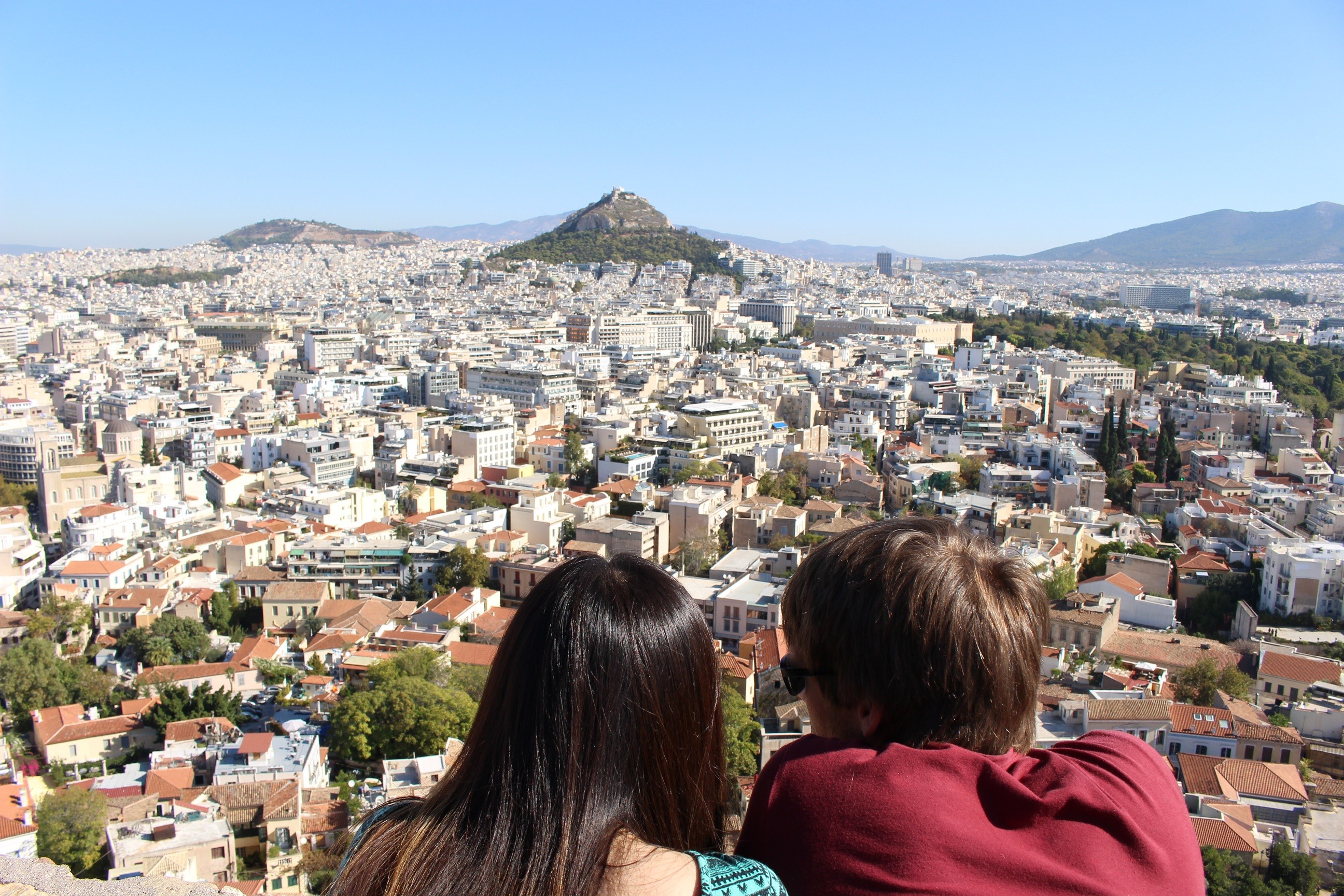 View of Lykavittos Hill from the Acropolis, highlighting the panoramic beauty and strategic location
View of Lykavittos Hill from the Acropolis, highlighting the panoramic beauty and strategic location
 Night view of the Acropolis, emphasizing its timeless appeal and architectural grandeur
Night view of the Acropolis, emphasizing its timeless appeal and architectural grandeur
 Night view of the Tower of the Winds, illustrating its historical importance and well-preserved structure
Night view of the Tower of the Winds, illustrating its historical importance and well-preserved structure
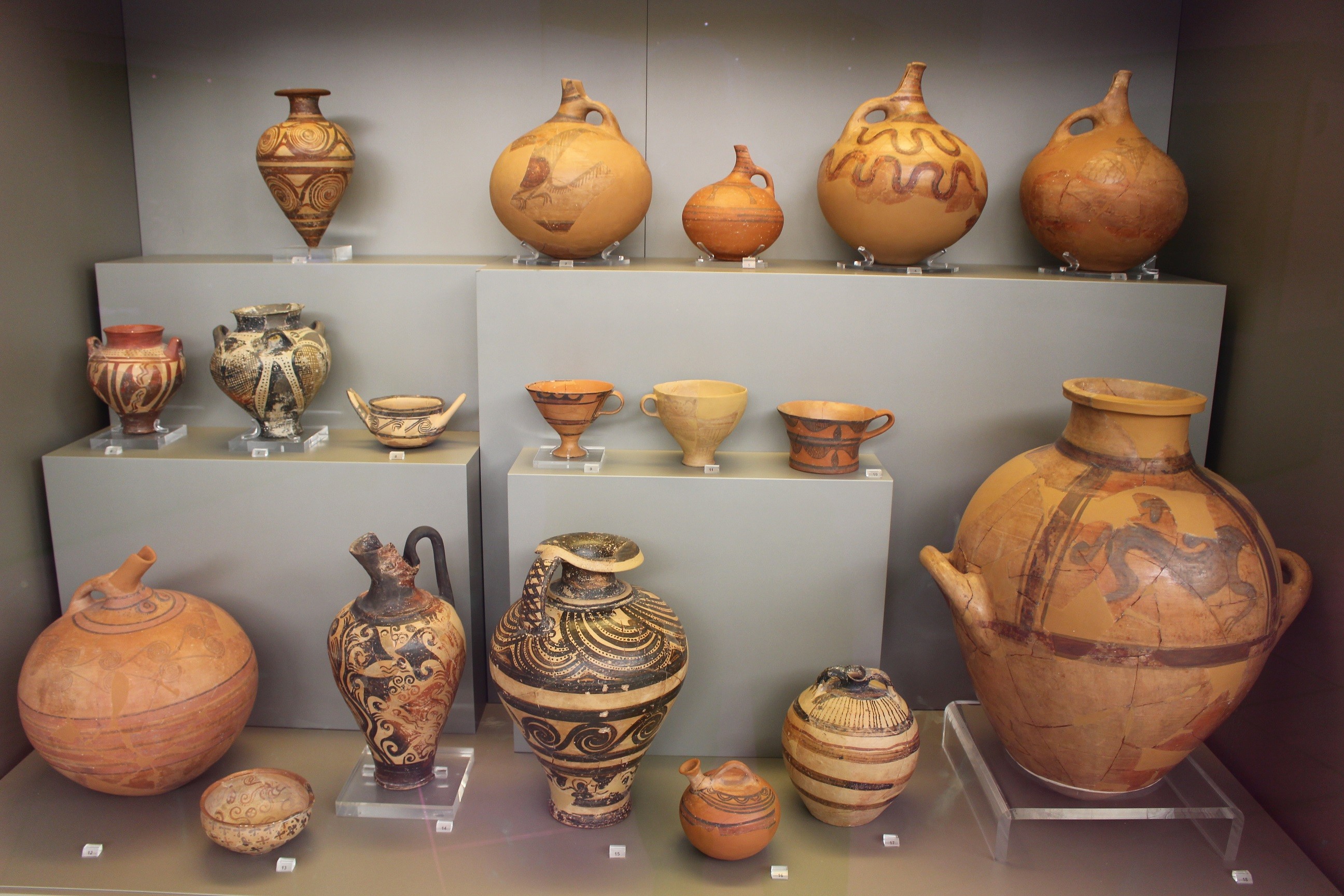 Ancient vases in the National Archeological Museum, showcasing the artistry and cultural heritage
Ancient vases in the National Archeological Museum, showcasing the artistry and cultural heritage
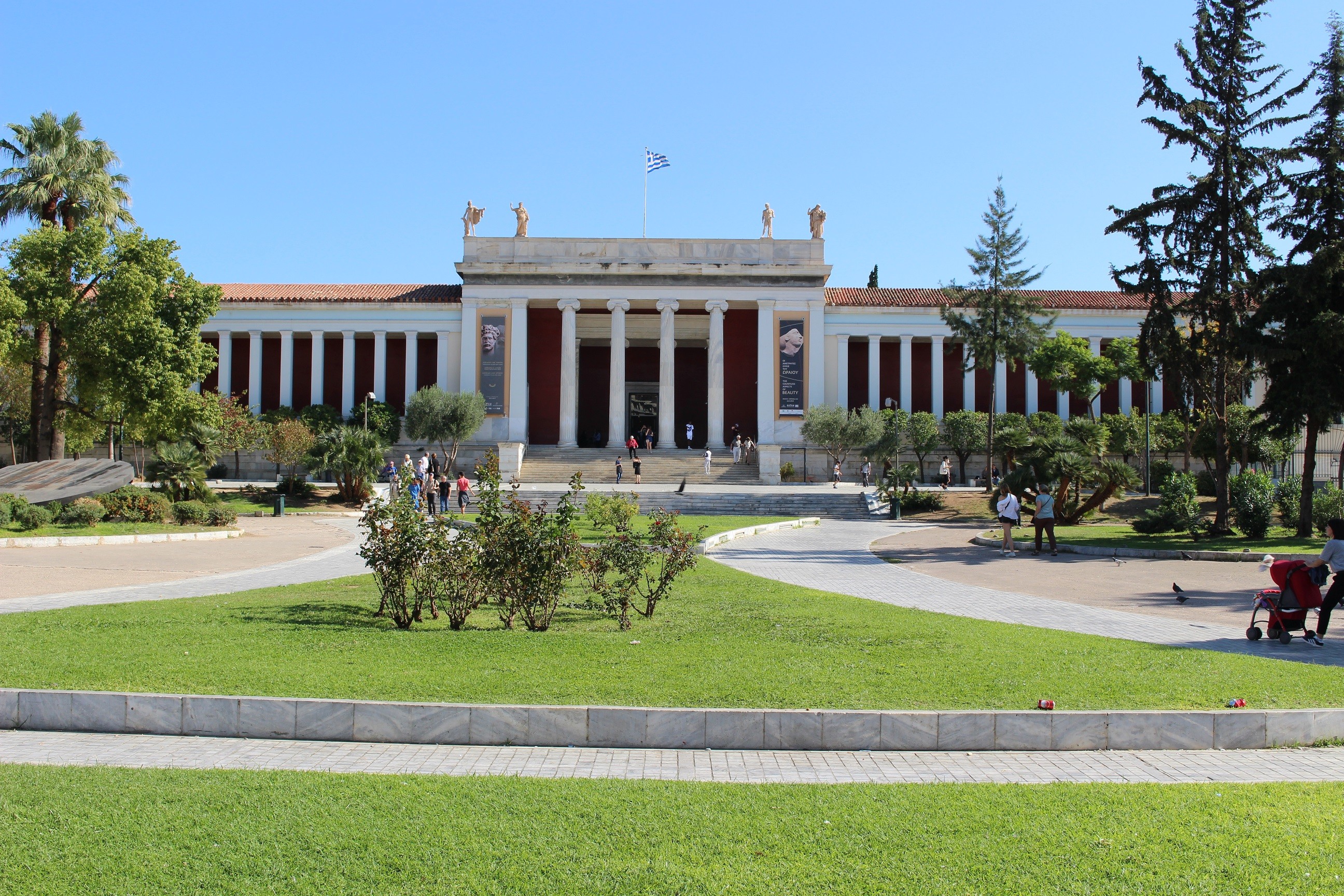 The National Archeological Museum, a repository of Greek history and artifacts
The National Archeological Museum, a repository of Greek history and artifacts
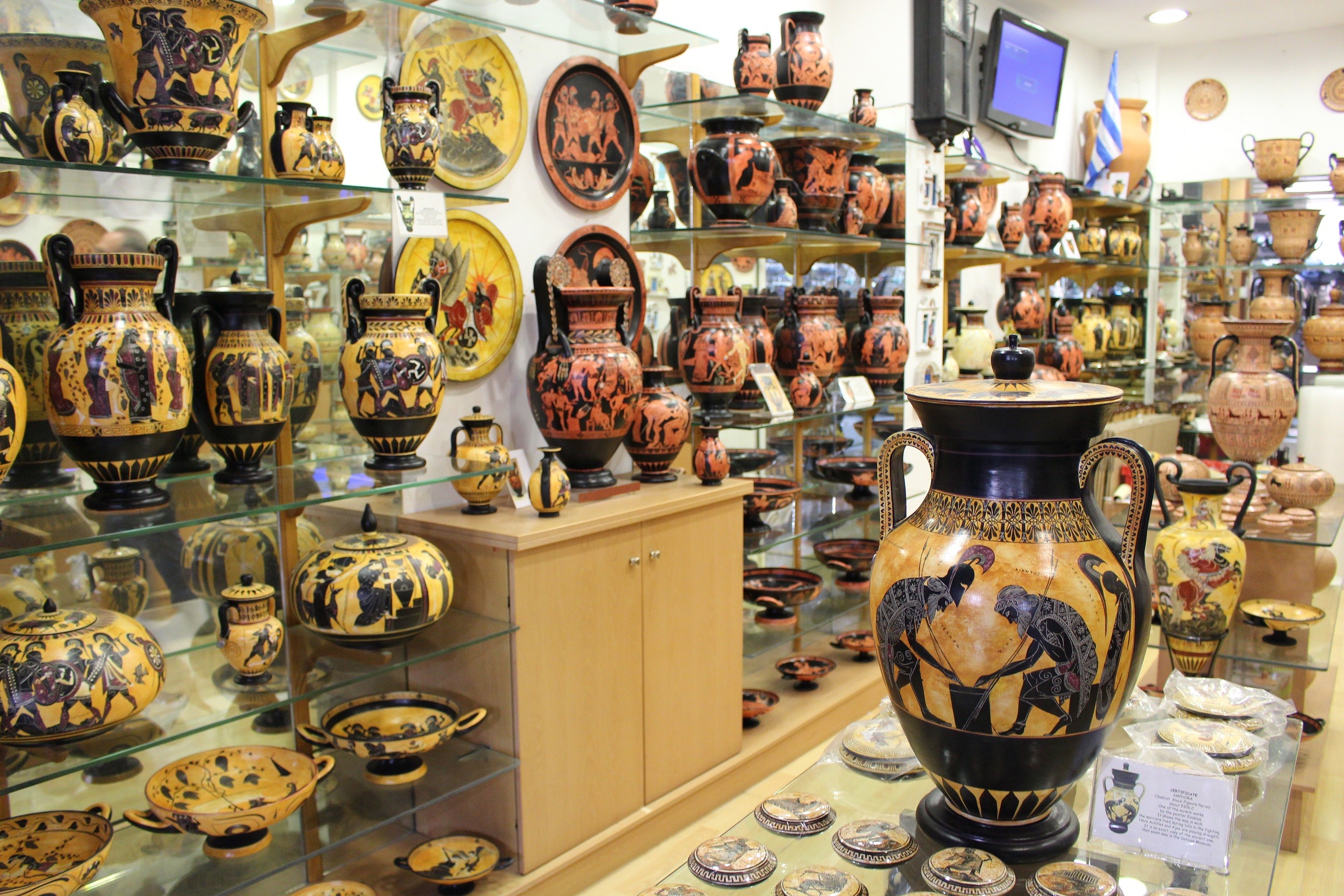 Hand-painted replica vases reflecting the ancient designs, available in souvenir shops
Hand-painted replica vases reflecting the ancient designs, available in souvenir shops
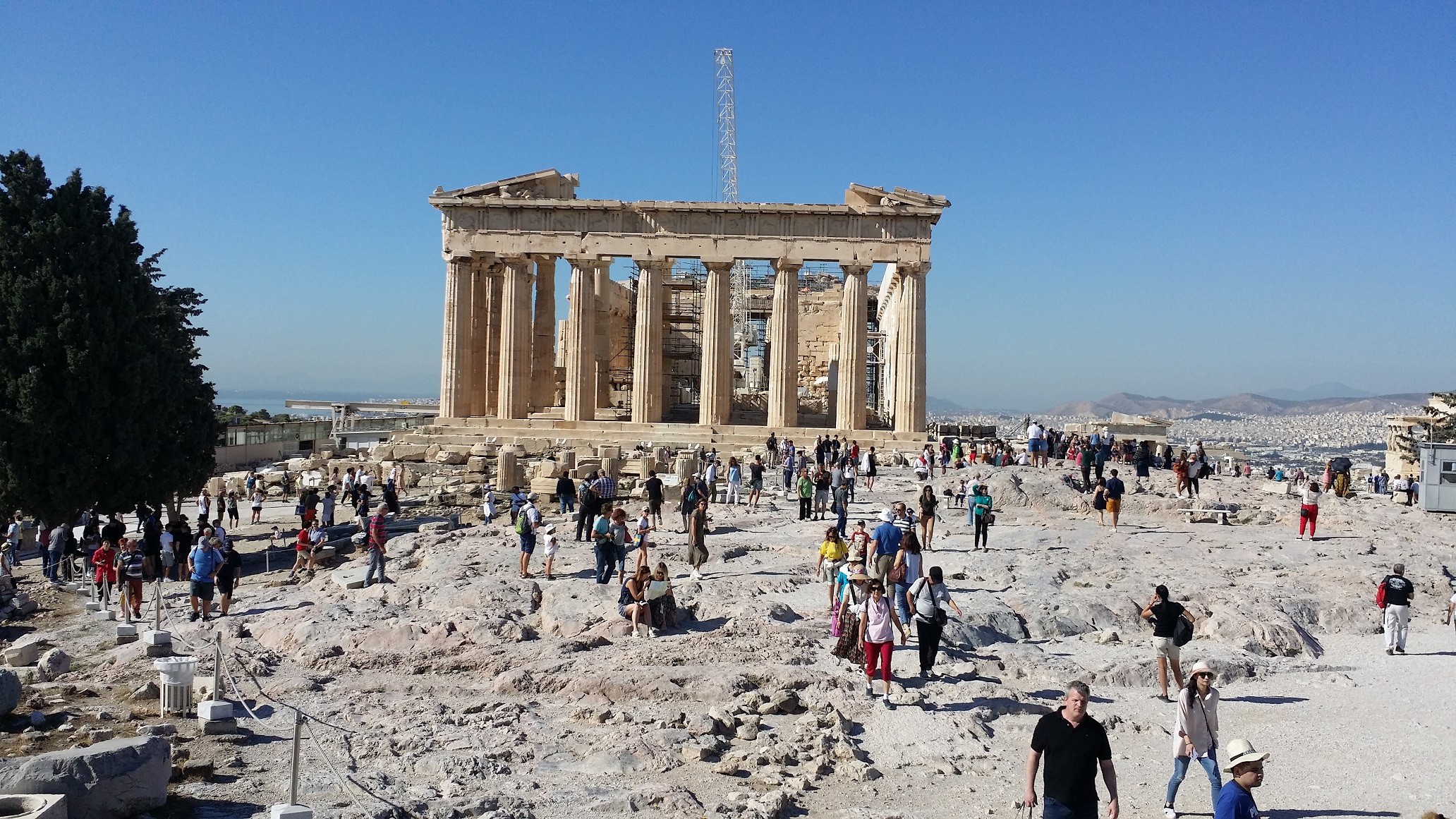 The Parthenon and Acropolis grounds during the day, capturing the ancient architectural marvels
The Parthenon and Acropolis grounds during the day, capturing the ancient architectural marvels
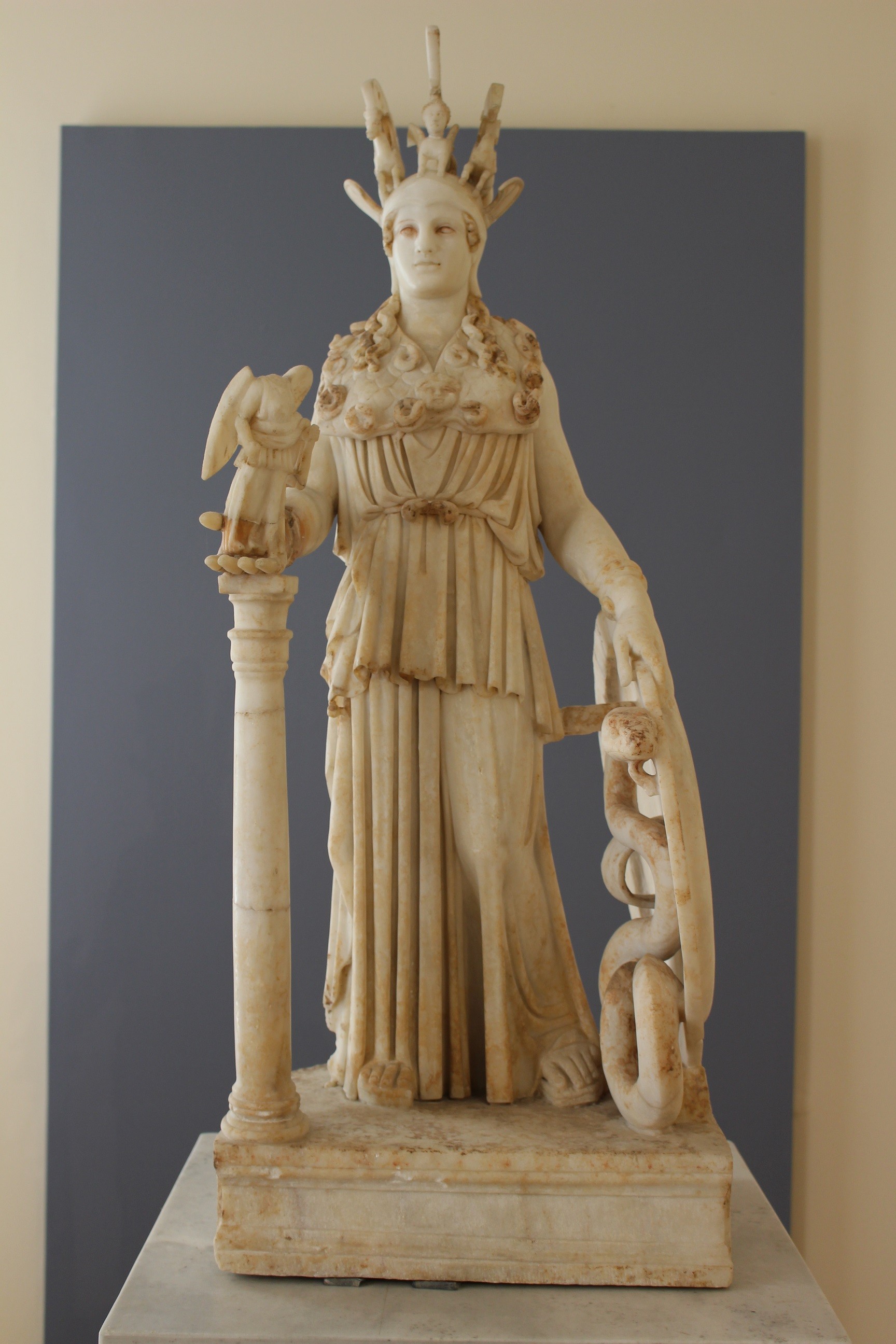 Roman copy of the Athena statue in the National Archeological Museum, demonstrating the enduring influence
Roman copy of the Athena statue in the National Archeological Museum, demonstrating the enduring influence
 Porch of the Caryatids of the Erechtheion, known for its unique maiden-figured columns
Porch of the Caryatids of the Erechtheion, known for its unique maiden-figured columns
 Original Erechtheion columns inside the Acropolis Museum, preserving the artifacts for future generations
Original Erechtheion columns inside the Acropolis Museum, preserving the artifacts for future generations
 Inside the Acropolis Museum, displaying ancient artifacts and sculptures
Inside the Acropolis Museum, displaying ancient artifacts and sculptures
 Statues outside the Stoa of Attalos in the Ancient Agora, blending history with modern restoration
Statues outside the Stoa of Attalos in the Ancient Agora, blending history with modern restoration
 Columns of the rebuilt Stoa of Attalos in the Ancient Agora, showcasing architectural restoration
Columns of the rebuilt Stoa of Attalos in the Ancient Agora, showcasing architectural restoration
 The Hephaisteion temple in the Ancient Agora, a well-preserved ancient structure
The Hephaisteion temple in the Ancient Agora, a well-preserved ancient structure
 Ancient temple replicas in a souvenir shop, capturing the essence of Greek heritage
Ancient temple replicas in a souvenir shop, capturing the essence of Greek heritage
 Old Town streets filled with shops and cultural experiences
Old Town streets filled with shops and cultural experiences
 Figurines of gods and philosophers in a souvenir shop, reflecting Greek mythology
Figurines of gods and philosophers in a souvenir shop, reflecting Greek mythology
 Byzantine Kapnikarea Church amidst the bustling city, showcasing historical integration
Byzantine Kapnikarea Church amidst the bustling city, showcasing historical integration
 Byzantine Panagia Gorgoepikoos church in Old Town, a testament to architectural history
Byzantine Panagia Gorgoepikoos church in Old Town, a testament to architectural history
 Tower of the Winds inside the Roman Forum, highlighting ancient engineering
Tower of the Winds inside the Roman Forum, highlighting ancient engineering
 Athens Flea Market offering a variety of Greek souvenirs and goods
Athens Flea Market offering a variety of Greek souvenirs and goods
 Packages of olives hanging on shop walls, a culinary delight of Greece
Packages of olives hanging on shop walls, a culinary delight of Greece
 Remaining columns of the Temple of Olympian Zeus, showcasing ancient architectural grandeur
Remaining columns of the Temple of Olympian Zeus, showcasing ancient architectural grandeur
 Syntagma Square with Parliament in the background, reflecting modern Greek politics
Syntagma Square with Parliament in the background, reflecting modern Greek politics
 Evzone guards at the Tomb of the Unknown Soldier, performing the Changing of the Guard ceremony
Evzone guards at the Tomb of the Unknown Soldier, performing the Changing of the Guard ceremony
FAQ: Temple Statue Authenticity
1. How can I tell if a temple statue is original?
Look for signs of age, weathering, and detailed craftsmanship, as original statues often exhibit these characteristics.
2. What materials are commonly used for temple statues?
Wood, bronze, stone, and lacquer are common materials used in Vietnamese temple statues.
3. Why are some temple statues replicas?
Replicas replace damaged originals or allow more people to view important artifacts without risking the originals.
4. Are ancient statues better than replicas?
Ancient statues hold historical value, while replicas maintain the temple’s aesthetic and spiritual integrity.
5. What is the significance of statues in temples?
Statues represent deities, historical figures, and ancestors, serving as focal points for worship and meditation.
6. How do I find reputable tours of Vietnamese temples?
SIXT.VN offers expertly guided tours to enhance your understanding and appreciation of Vietnamese temples.
7. What regulations protect temple statues in Vietnam?
Regulations prevent theft and vandalism, and security systems are in place to protect cultural heritage sites.
8. How are temple statues conserved?
Experts use specialized techniques to clean, repair, and protect statues from environmental damage and human interference.
9. Can historical events influence temple statue designs?
Yes, cultural exchanges and historical events have significantly influenced the design and creation of temple statues in Vietnam.
10. How can SIXT.VN enhance my temple visit experience?
SIXT.VN offers convenient airport transfers, comfortable hotel bookings, and expertly guided tours for a seamless experience.



